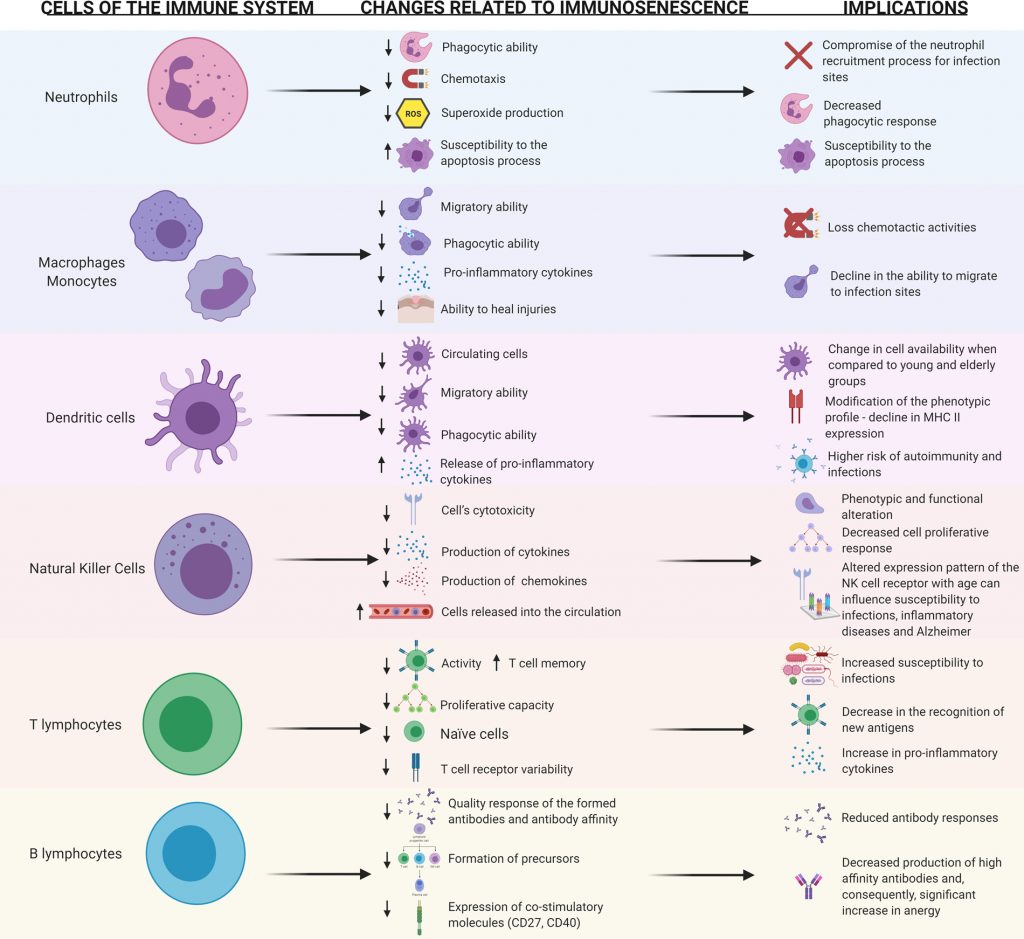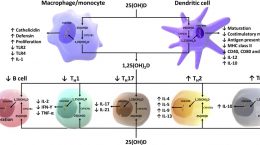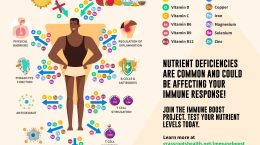Published on January 28, 2022
Video Friday: What happens to our cells as we age, and how vitamin D (and Omega-3s) can help reduce this process
Key Points
- Aging of the immune cells (called immunosenescence) can have a negative consequence not only on immune health, but also on the health of other cells
- One of the key events that occurs as a part of the aging process is the shortening or degradation of telomeres, which can then affect the health of the cells and lead to increased risk of death and disease
- Studies on vitamin D have shown that individuals with the lowest levels of vitamin D had shorter telomeres; in one study, those with the lowest vitamin D showed an extra 5 years of aging on the telomeres
 Aging causes many changes within our cells and tissues, and these changes can present many challenges. It is a process that is influenced by our genes, metabolism, hormonal status, environmental stress, and other factors, and as the aging of the cells and tissues continues, it can lead to the exhaustion of each cell’s ability to renew. Aging of the immune cells specifically (called immunosenescence) can have a negative consequence not only on immune health, but also on the health of other cells. In all, this process can lead to lower immunity, a decreased response to pathogens, increased autoimmunity, lower vaccination responses, chronic diseases (including cancer, cardiovascular disease, and cognitive diseases), and increased mortality rates.
Aging causes many changes within our cells and tissues, and these changes can present many challenges. It is a process that is influenced by our genes, metabolism, hormonal status, environmental stress, and other factors, and as the aging of the cells and tissues continues, it can lead to the exhaustion of each cell’s ability to renew. Aging of the immune cells specifically (called immunosenescence) can have a negative consequence not only on immune health, but also on the health of other cells. In all, this process can lead to lower immunity, a decreased response to pathogens, increased autoimmunity, lower vaccination responses, chronic diseases (including cancer, cardiovascular disease, and cognitive diseases), and increased mortality rates.
How Aging Affects Our Immune Cells
A publication by Rodrigues et al. titled Hallmarks of aging and immunosenescence: Connecting the dots includes some excellent illustrations of the changes within the immune system that result from the aging process. The figure below paints a detailed picture of the many alterations within the immune cells themselves that can occur as a result of aging.

How Vitamin D Can Affect the Way We Age
One of the key events that occurs as a part of the aging process is the shortening or degradation of telomeres, which can then affect the health of the cells. One study on how telomere length affected mortality found a 3 to 8 times increased risk of death due to heart or infectious diseases, respectively, among older individuals with shorter telomeres. The authors found that telomere length could be preserved through a healthy diet (such as the Mediterranean diet), increased intake of antioxidants, and regularly exercise.
The video below by Dr. Rhonda Patrick, PhD., discusses vitamin D and its relationship to telomere length, as demonstrated through several studies.
Below is a quick summary of some of the key points discussed in the video.
- Vitamin D has been shown to affect gene expression and therefore hundreds of physiological processes within body
- Our body produces its own vitamin D through UVB exposure, however, there are many factors that affect vitamin D production and utilization
- As we age, our body becomes less efficient at producing vitamin D, such that a 70 year old produces 4 times less vitamin D than a 20 year old
- The “Sweet Spot” for vitamin D as she suggests is 30-80 ng/ml (75-200 nmol/L); GrassrootsHealth scientists recommend a vitamin D level between 40-60 ng/ml (100-150 nmol/L)
- Many are deficient in vitamin D, and the risk of deficiency is worse among those with darker skin
- The best way to increase vitamin D is through intake; foods contain little vitamin D, and most individuals require supplementation
- Dr. Patrick suggests that you can start at 4000 IU vitamin D per day, but also suggests testing the vitamin D level so that supplementation can be adjusted in order to achieve the sweet spot
- Vitamin D can regulate aging process by affecting telomere length
- Telomeres help protect DNA from damage, but they shorten with age; in fact, short telomeres are a biological marker for aging
- Shortened telomeres cause cell apoptosis, or cell death
- Studies on vitamin D have shown that individuals with the lowest levels of vitamin D had shorter telomeres; in one study, those with the lowest vitamin D showed an extra 5 years of aging on the telomeres
- Another study showed that those with vitamin D levels between 40-60 ng/ml had an increased lifespan compared to individuals with lower levels
- Animal studies have shown that vitamin D deficiency was linked to premature aging and a shortened lifespan
- Conclusion: use the tools you have at your disposal, such as testing for vitamin D, to fine-tune your vitamin D level!
Omega-3s Can Also Help Protect Cells from the Aging Process
Another video by Dr. Rhonda Patrick is part of an interview with Dr. Steve Horvath about evidence suggesting that supplemental vitamin D or omega-3 fatty acids can slow epigenetic aging and add years to our lives. Inflammation is another major contributor to aging (termed inflammaging), and both vitamin D and omega-3s have several anti-inflammatory effects within the body and on the health of the cells- making it important to get enough of each on a regular basis.
Measure Your Vitamin D and Omega-3 Levels at Home
 Having and maintaining healthy vitamin D levels and other nutrient levels can help improve your health now and for your future. Choose which to measure, such as your vitamin D, Omega-3 Index, omega fatty acid ratios, and essential minerals including magnesium and zinc, by creating your custom home test kit today. Take steps to improve the status of each of these measurements to benefit your overall health. You can also track your own intakes, symptoms and results to see what works best for YOU.
Having and maintaining healthy vitamin D levels and other nutrient levels can help improve your health now and for your future. Choose which to measure, such as your vitamin D, Omega-3 Index, omega fatty acid ratios, and essential minerals including magnesium and zinc, by creating your custom home test kit today. Take steps to improve the status of each of these measurements to benefit your overall health. You can also track your own intakes, symptoms and results to see what works best for YOU.
Enroll and test your levels today, learn what steps to take to improve your status of vitamin D (see below) and other nutrients and blood markers, and take action! By enrolling in the GrassrootsHealth projects, you are not only contributing valuable information to everyone, you are also gaining knowledge about how you could improve your own health through measuring and tracking your nutrient status, and educating yourself on how to improve it.





